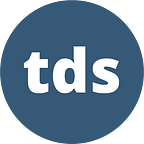April Edition: Art, Creativity and Data Science
One of the main reasons why there is so much interest in Data Science is its various applications. Some examples of fields in which Artificial Intelligence (AI) powered solutions are used every day are Medicine, Finance and the Tech Industry. Although, researchers are now currently working in order to create AI services able to operate in many more ambits.
Can Artificial Intelligence be used in order to create artwork?
Of course, it can!
Thanks to years of research, companies like Google and NVIDIA managed to create different Deep Learning model architectures able to suit this purpose. Some examples are Google DeepDream (used to create dream-like hallucinogenic images from real ones) and NVIDIA GauGAN (which is able to turn doodles into realistic images).
If you are interested in finding out more about how to create artistic works using Data Science, this month’s newsletter provides some of the best articles on Towards Data Science about this topic and more.
Pier Paolo Ippolito — Editorial Associate
Artbreeder. Draw me an Electric Sheep.
By Vlad Alex (Merzmensch) — 10 min read
How to apply a Generative Adversarial Networks in a user-friendly way.
CycleGANs to Create Computer-Generated Art
By Zach Monge, PhD — 9 min read
An explanation of CycleGANs and demonstration of computer-generated art
Next Level Art and the Future of Work and Leisure
By Max Frenzel — 30 min read
Becoming More Creative (and Human) with AI
I trained an AI to imitate my own art style. This is what happened.
By Michael Kammerer — 6 min read
AI is everywhere today, and if you think we just DO NOT NEED another AI article, you’re probably right. But before you close this tab, please hear me out. This one is different.
Art connoisseurship in the age of machine learning
By Catherine Huang — 5 min read
If I had a hard time passing a Buzzfeed quiz on fake art, how can a computer do a better job at spotting the fakes?
We also thank all the great new writers who joined us recently Kelvin Lee, Luís Rita, Joey Rose, Hadeer Hammad, Aurélie Giraud, Ygor Rebouças Serpa, Yufeng, Deepak Dilipkumar, Angela Kunanbaeva, Edward Krueger, Slimane Thabet, Fabian Deuser, Andrew Cole, Daniel Wiczew, Nicola Giordano, Lance Deng, Matthew R Finch, Alaedine, Nicolas Bertagnolli, JackYe, and many others. We invite you to take a look at their profiles and check out their work.
